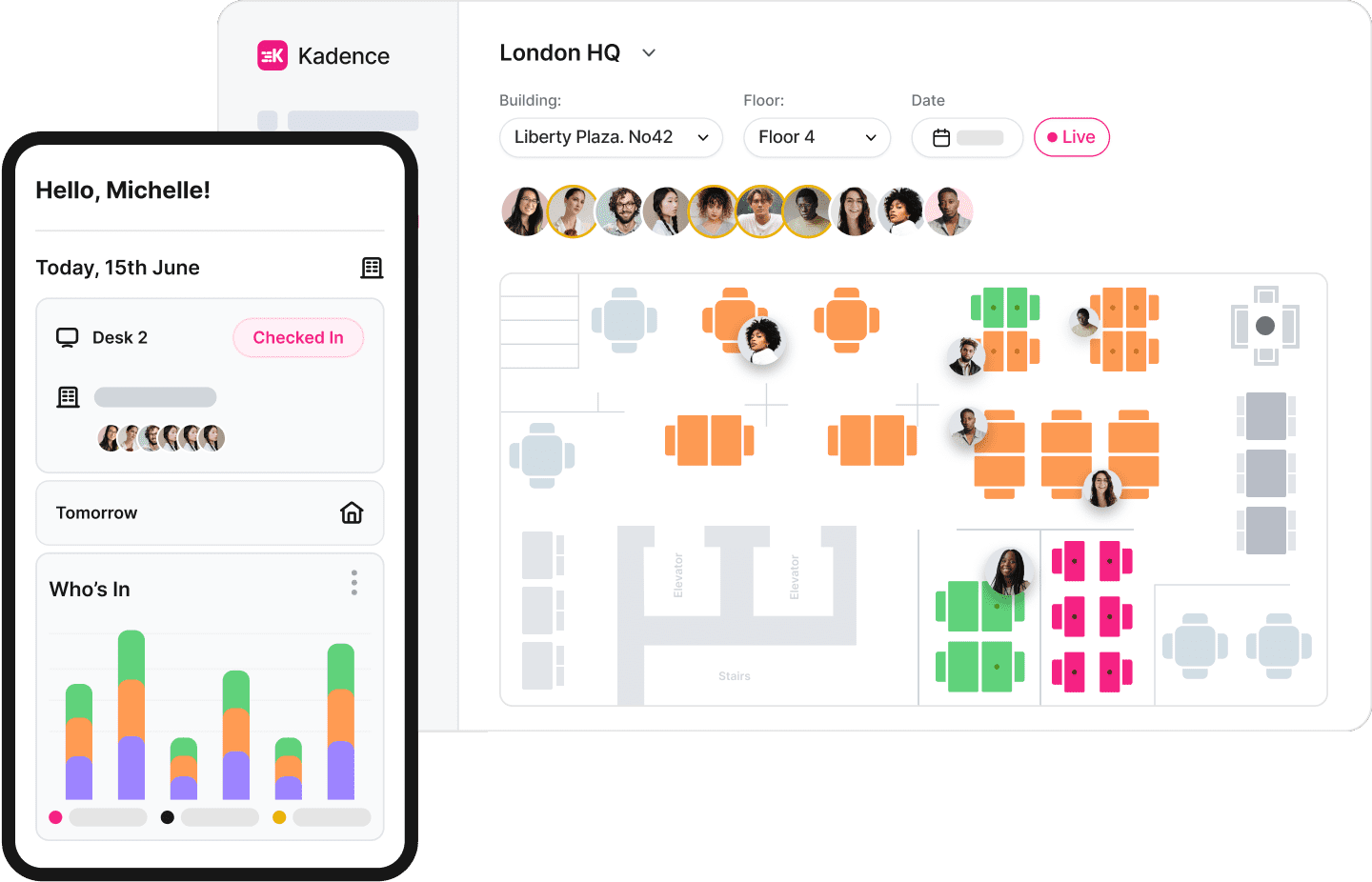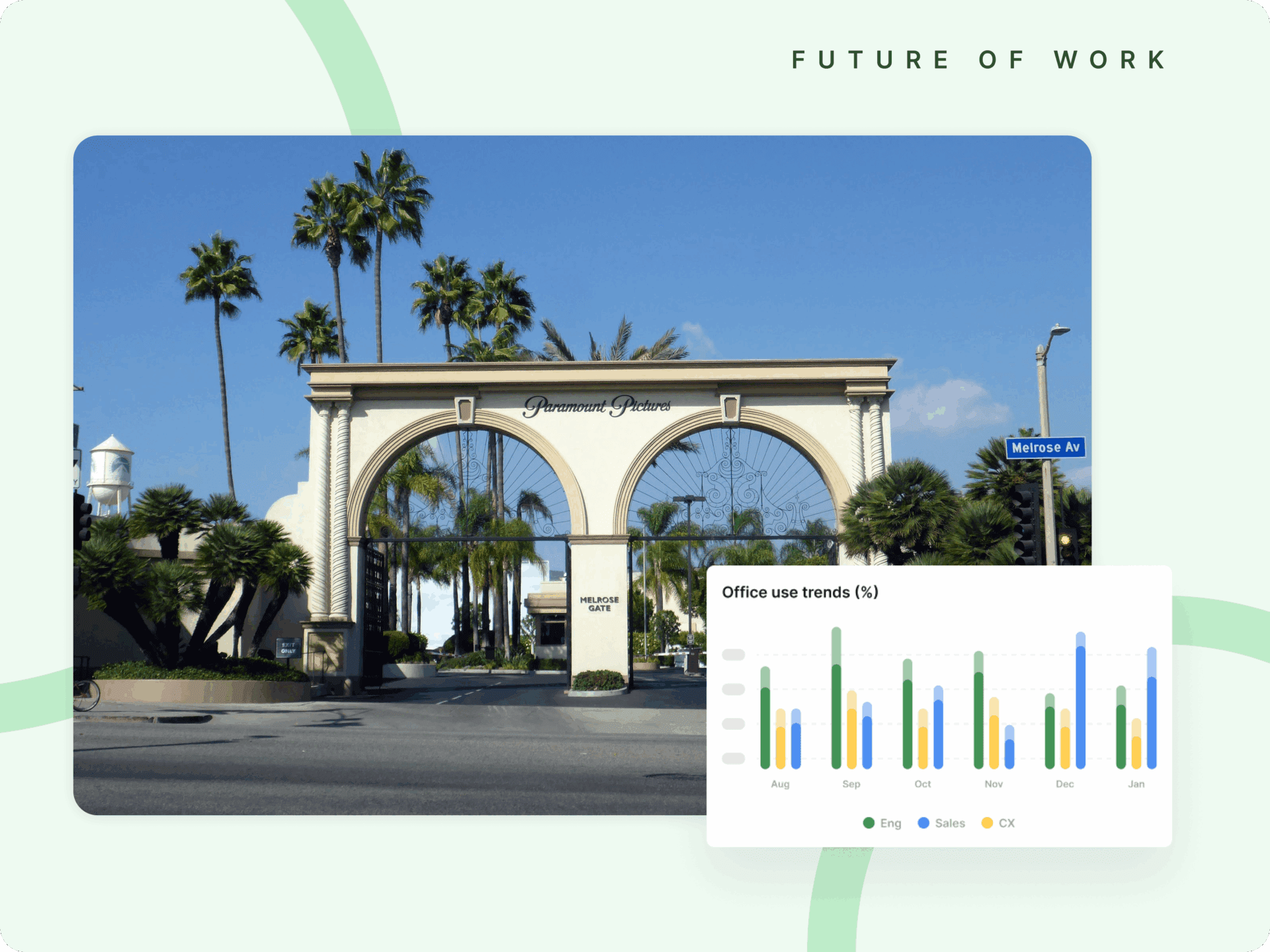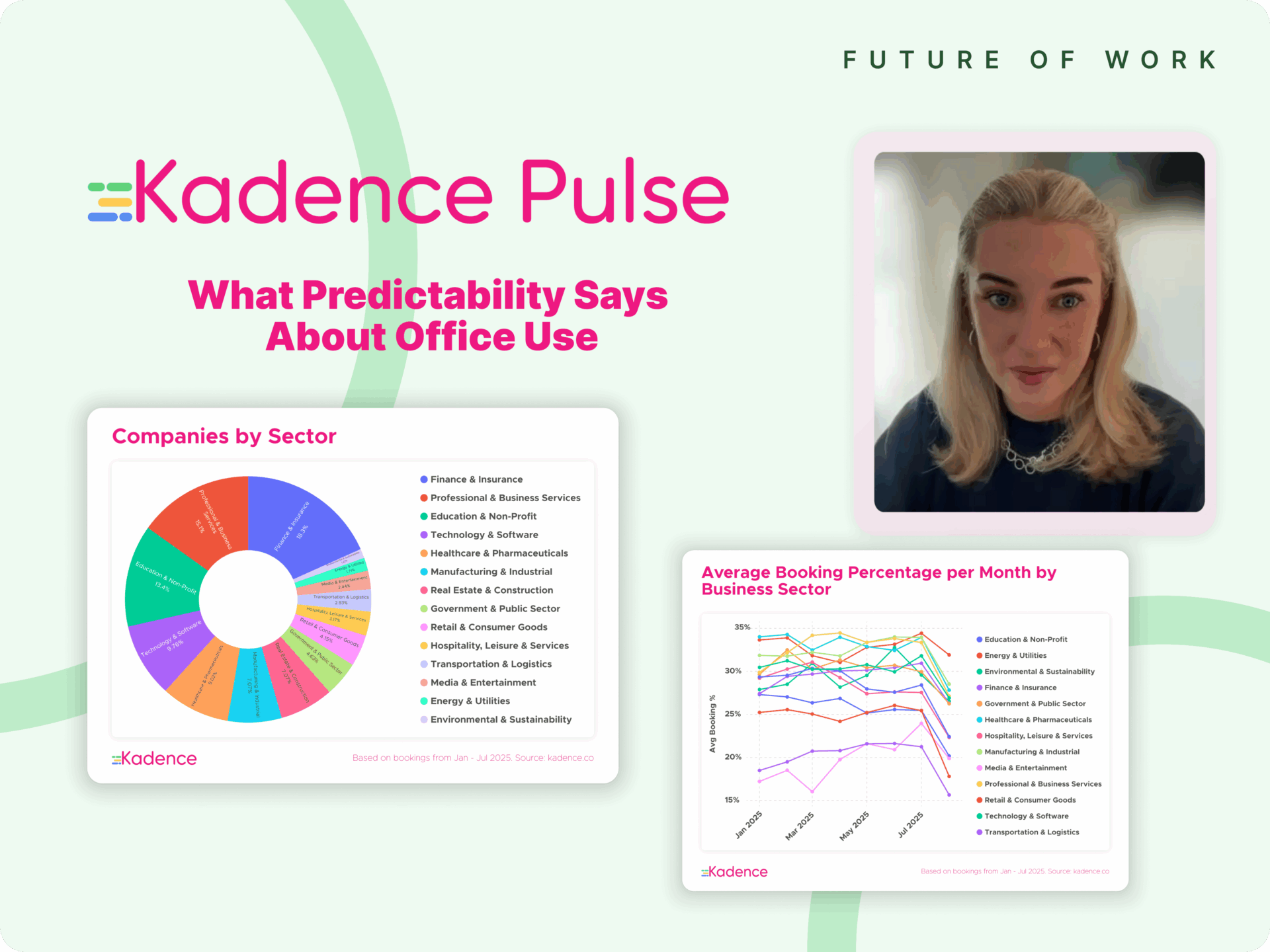The U.S. federal government’s recent decision to terminate leases on millions of square feet of office space will result in cuts to office spaces across the nation. We’re witnessing a seismic shift in how organizations view their physical workplaces. On the surface, it might seem contradictory—federal agencies are pushing employees back to the office while simultaneously slashing their real estate footprint. But dig a little deeper, and it’s clear this isn’t about mixed signals; it’s about efficiency and performance.
Too Much Space, Not Enough Purpose
If the government can cut vast amounts of office space without crippling its operations, it begs the question: did they need that space in the first place? The answer, it seems, is no. For decades, office spaces were measured by a simple formula: more people equals more desks equals more square footage. But hybrid work has upended that equation. It’s no longer about how many people you have but how, when, and where they work best.
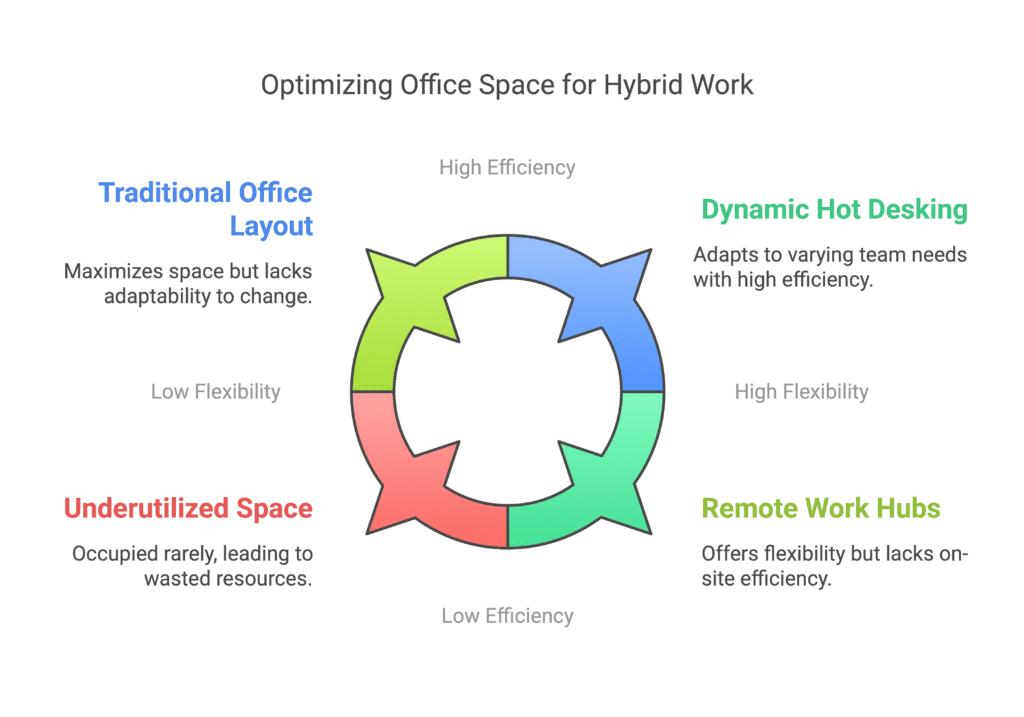
This isn’t just a federal issue. Many organizations are grappling with the realization that their real estate portfolios are bloated, inefficient, and out of sync with the modern workforce. The pandemic didn’t create this problem; it simply exposed it.
The New Metrics of Office Performance
What we’re seeing is a shift from occupancy to optimization. It’s not about filling every desk but making every square foot count. The federal government’s move is part of a broader trend of organizations getting leaner and more intentional about their workspaces. Think of it like corporate fitness: cutting the excess, focusing on performance, and investing in spaces that actually support productivity rather than just housing people.
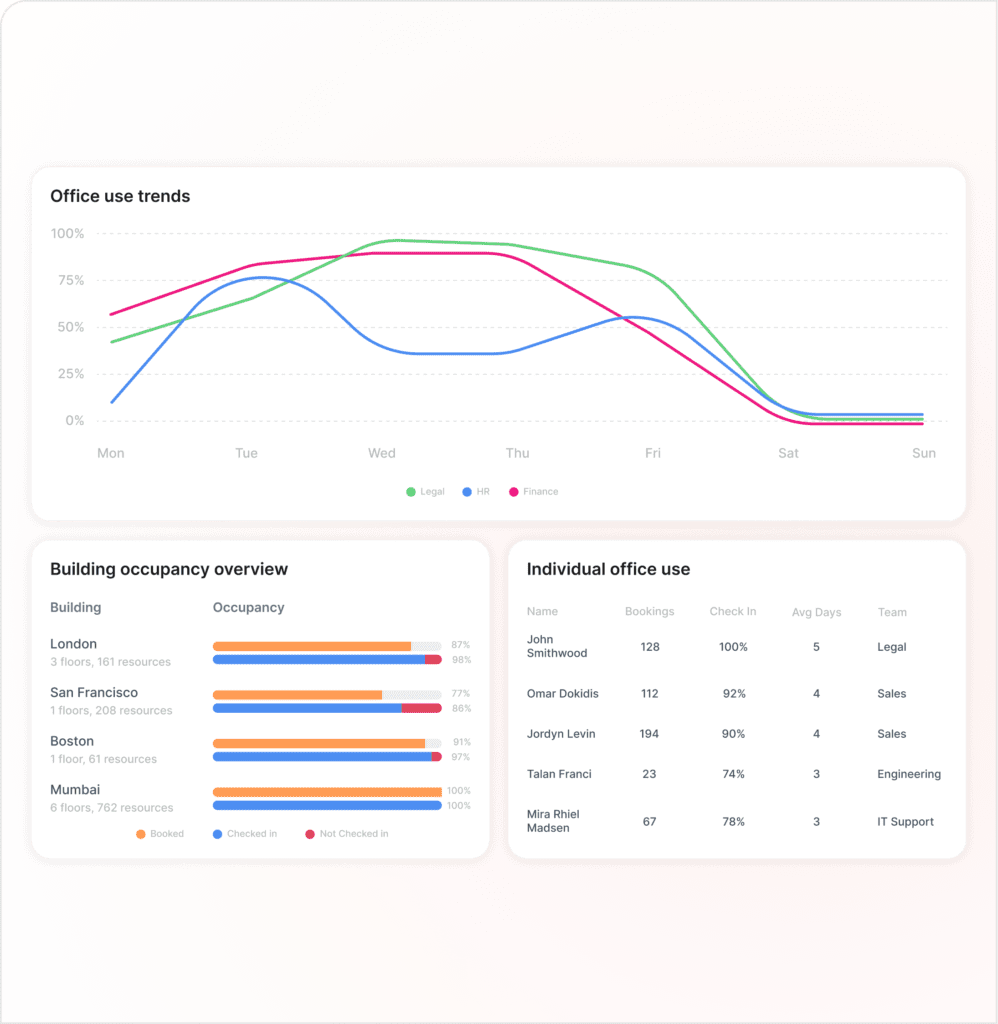
But here’s the catch: you can’t optimize what you don’t measure. That’s where real-time data becomes crucial.
Enter Kadence: Data-Driven Decisions for Smarter Workspaces
At Kadence, we help organizations make these tough decisions with confidence. Our real-time data analytics show exactly how offices are being used—which spaces are thriving, which are underutilized, and where adjustments can drive the most impact. It’s not guesswork; it’s insight-driven strategy.
See how Five Good Friends cut office costs by 15%.
Imagine knowing that one floor of your office sits half-empty most days while another is overbooked. Or discovering that meeting rooms are in high demand on Tuesdays but nearly vacant on Fridays. With Kadence, these insights are at your fingertips, allowing you to right-size your real estate, improve employee experience, and cut costs without compromising on performance.
The Pitfalls of a Rigid Five-Day Office Mandate
Mandating a rigid five-day office schedule overlooks the flexibility that hybrid work provides. Just as cutting excess space is about efficiency, so too is allowing employees to work in ways that maximize their productivity. A one-size-fits-all approach can lead to underutilized spaces and disengaged teams, defeating the very purpose of optimizing office performance.
Flexibility isn’t just a perk; it’s a strategic advantage. When employees have the autonomy to choose where and how they work best, organizations benefit from increased engagement, higher productivity, and more efficient use of office resources. 61% of those polled on the effectiveness of hybrid work citied improved productivity. A rigid mandate can stifle these benefits, leading to spaces that are technically occupied but not optimally utilized.
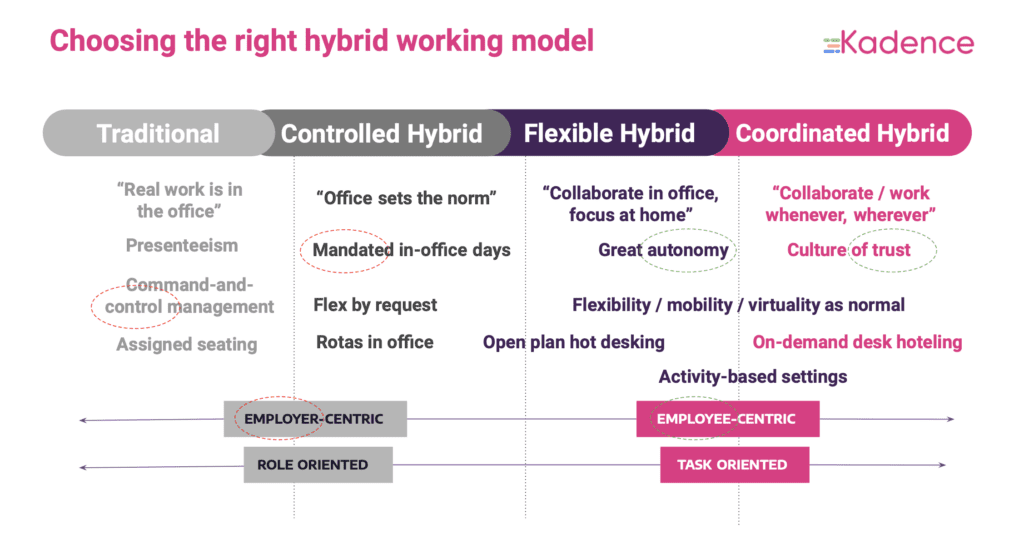
Learn how to make hybrid boost efficiency and performance with our template strategy.

The Bottom Line
The federal government’s office cuts aren’t a sign of retreat; they’re a sign of recalibration. It’s about getting fit for purpose, shedding the unnecessary, and focusing on what truly drives results. But recalibration isn’t just about reducing square footage; it’s also about rethinking how we use the space we keep. Rigid mandates, like a five-day office schedule, can undermine the very efficiencies these federal office cuts aim to achieve.
Organizations everywhere should take note. In the era of hybrid work, success isn’t measured by how much space you have—it’s measured by how well you use it.
And with Kadence, you can make sure every square foot works as hard as your team does. Book a demo with our hybrid experts today to see how you optimize your real estate.
